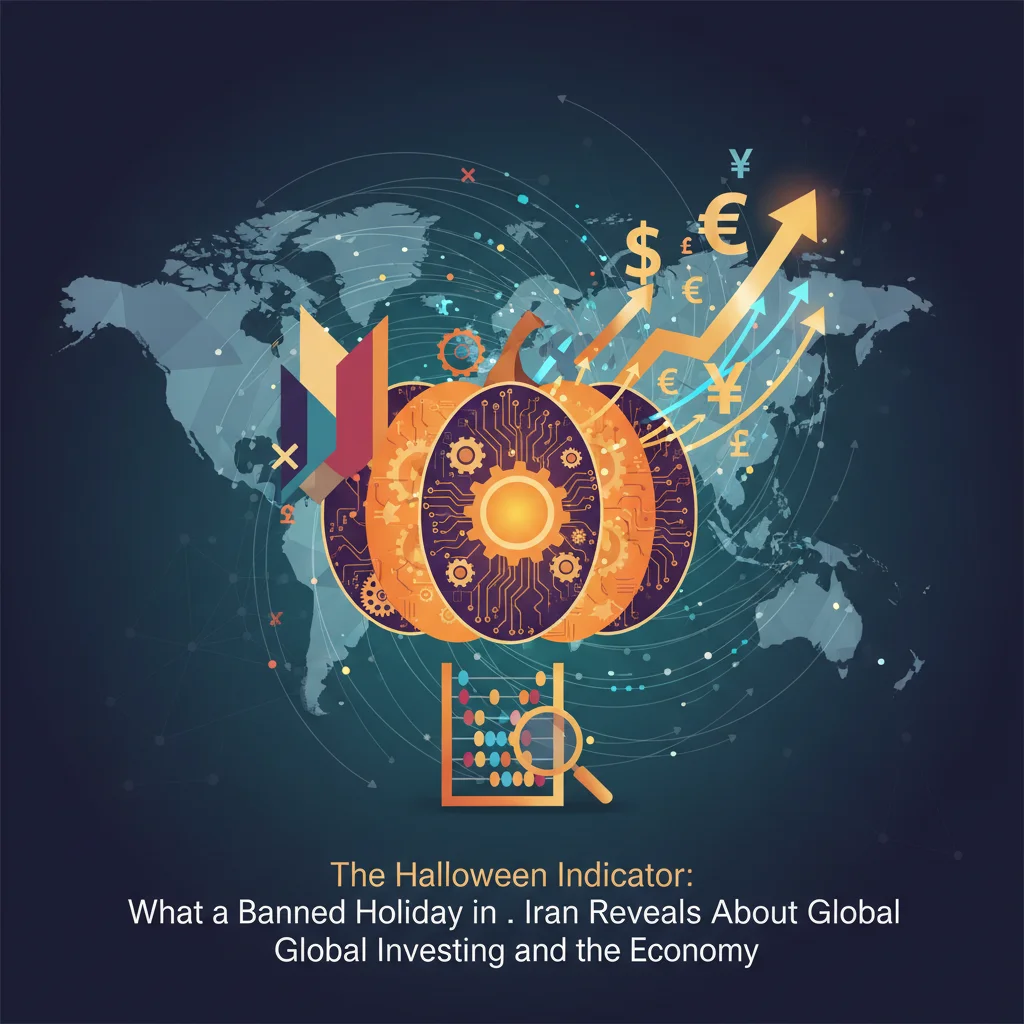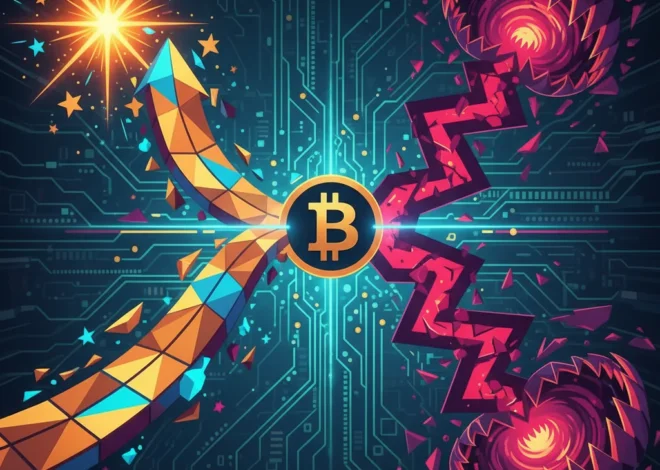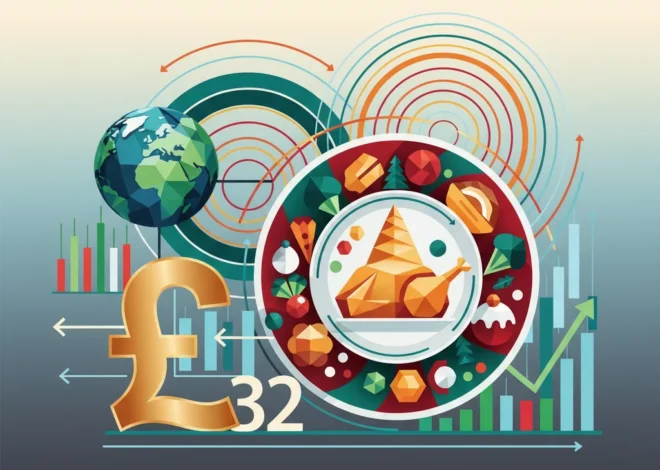
The Halloween Indicator: What a Banned Holiday in Iran Reveals About Global Investing and the Economy
Imagine sitting in an advanced International Baccalaureate (IB) Geography class. The topic of the day isn’t tectonic plates or climate patterns, but something more nuanced: human development. As a case study, the instructor brings up a curious headline: young Iranians are defying a state ban to celebrate Halloween. On the surface, it’s a simple story of cultural curiosity. But for the astute investor, the finance professional, or the business leader, this classroom scenario is a microcosm of one of the most powerful, yet often overlooked, forces shaping the modern global economy.
This isn’t just about costumes and candy. It’s about the collision of state control with globalized culture, the unstoppable influence of digital connectivity, and the subtle economic signals that precede seismic market shifts. Understanding why a banned Western holiday thrives in a sanctioned, theocratic state can provide more insight into future market dynamics than a dozen traditional earnings reports. It’s a real-world lesson in how social undercurrents drive economic realities, impacting everything from the stock market and banking to the very future of fintech and international trade.
Beyond GDP: Human Development as a Core Investment Metric
For decades, Gross Domestic Product (GDP) has been the undisputed champion of economic indicators. A rising GDP signaled a healthy economy ripe for investment. But this one-dimensional metric often fails to capture the full picture. It tells us the size of the economic pie, but nothing about how it’s sliced, who gets to eat, or if the ingredients are sustainable for long-term growth.
This is where the concept of Human Development becomes a critical tool for sophisticated financial analysis. The United Nations’ Human Development Index (HDI) offers a more holistic view, measuring a country’s success not just by its economic output, but by the well-being and capabilities of its people. It combines three key dimensions:
- A long and healthy life: Measured by life expectancy at birth.
- Knowledge: Measured by mean years of schooling and expected years of schooling.
- A decent standard of living: Measured by Gross National Income (GNI) per capita.
For investors, a steadily rising HDI is a powerful leading indicator. It signals a stable society, a more educated and productive workforce, and a growing middle class with disposable income. A country with a high HDI is more likely to foster innovation, attract foreign direct investment, and provide a stable regulatory environment. Conversely, a nation with a high GDP but a stagnating HDI may be sitting on a powder keg of social inequality and political instability—a significant risk to any investment portfolio. The discussion of such metrics is no longer confined to academia; it’s a core component of modern geopolitical and economic strategy (source).
This nuanced approach to economics is vital for anyone involved in long-term investing, international banking, or strategic business expansion. It’s about understanding the deep-seated factors that underpin a resilient and growing economy.
The Economics of Defiance: When Culture Becomes Capital
Returning to our Tehran Halloween party, what economic story is actually unfolding? The defiance of a state ban on a Western holiday is a powerful symbol of a population, particularly its youth, seeking integration with the global community. This desire is not merely cultural; it is profoundly economic.
This phenomenon creates several key economic effects:
- The Rise of the Informal Economy: When official channels are closed, an informal or “grey” market emerges. People find ways to import costumes, decorations, and party supplies. Entrepreneurs, often small-scale and operating online, cater to this demand. This grassroots economic activity, while hidden from official GDP figures, demonstrates consumer demand and entrepreneurial spirit—key ingredients for future growth.
- A Barometer for Consumer Aspiration: The demand for Halloween is a proxy for a much larger appetite for global brands, media, and technology. For a multinational corporation, this signals a latent market waiting to be unlocked. It tells them that despite sanctions and political rhetoric, the Iranian consumer is connected, aware, and aspirational. This has massive implications for future market entry strategies.
- The Power of Digital Globalization: How does a teenager in Iran learn about Halloween, decide to celebrate it, and find a costume? Through the internet, social media, and VPNs. This highlights how financial technology and digital platforms can render traditional economic and cultural barriers porous. This digital penetration is a crucial factor for any analysis of a country’s long-term potential.
Below is a table illustrating the tension between state control and digital access in select countries. A high discrepancy between a low press freedom score and high internet penetration can often signal a population actively seeking outside information and cultural products, representing a potential market for digital services and goods.
| Country | Internet Penetration (2023) | Press Freedom Score (2023, Lower is Better) | HDI Rank (2022) |
|---|---|---|---|
| Iran | ~78% | 21.82 (Rank 177/180) | 76 (High) |
| China | ~75% | 22.97 (Rank 179/180) | 75 (High) |
| Vietnam | ~79% | 24.58 (Rank 178/180) | 107 (High) |
| Germany | ~93% | 83.60 (Rank 21/180) | 9 (Very High) |
Sources: Data compiled from Reporters Without Borders, World Bank, and UNDP.
This data shows that despite heavy state control over media, populations in countries like Iran and China are highly digitized. This digital lifeblood allows for the flow of ideas and, crucially, creates pathways for commerce that defy traditional regulation. For the fintech sector, this is a clear signal of opportunity for developing decentralized or censorship-resistant platforms for trading and banking.
The New Global Trade Playbook: Why Regional Deals Are Reshaping Markets and Investments
Fintech, Blockchain, and the New Economic Frontier
The story of cultural defiance is intrinsically linked to the evolution of financial technology. In economies with heavy capital controls, sanctions, or unstable local currencies, fintech and blockchain technologies are not just conveniences—they are lifelines.
Consider the logistics of the informal Halloween market in Iran. A local entrepreneur might need to pay a supplier in another country. Traditional banking channels could be slow, expensive, or blocked entirely due to sanctions. This is where cryptocurrencies and stablecoins come into play. A cross-border transaction using blockchain technology can be near-instantaneous and bypass the traditional financial system, enabling the very commerce that authorities may wish to suppress.
This isn’t theoretical. From Venezuela to Nigeria to Iran, citizens are increasingly turning to digital assets to preserve wealth, conduct business, and participate in the global economy. For investors, this trend is a critical one to watch. It signals:
- A Growing Addressable Market: The demand for decentralized financial tools is enormous in regions facing economic instability or authoritarian control.
- Regulatory Arbitrage: Fintech companies that can navigate complex geopolitical landscapes have a unique advantage.
- Disruption of Traditional Banking: The inability of the legacy banking system to serve these populations creates a vacuum that innovative technologies are rushing to fill.
The defiance of a Halloween ban is, therefore, a small-scale stress test of a country’s economic and technological reality. It shows us where the friction points are and where technology, particularly financial technology, is providing the grease. The insights gained from such observations are invaluable for anyone in the trading or investing world looking for the next growth frontier (source).
A New Economic Dawn? Unpacking the US-China Trade Deal and Its Impact on Global Markets
Conclusion: The Investor as a Modern Geographer
The lesson from our hypothetical IB Geography class is clear: the most important economic trends are often written not in stock market tickers, but in the social fabric of a nation. The defiance of a Halloween ban in Iran is a powerful data point that speaks volumes about globalization, consumer aspiration, technological adoption, and the limits of state power.
For the modern investor, banker, or business leader, a purely quantitative approach to the global economy is no longer sufficient. We must also become students of culture, technology, and human development. By learning to read these subtle but powerful signals, we can better anticipate risk, identify hidden opportunities, and build investment strategies that are resilient enough to thrive in our complex and ever-changing world. The ultimate takeaway is that understanding the ‘why’ behind human behavior is the most fundamental and enduring form of economic analysis.


